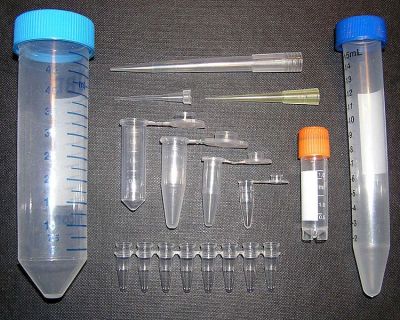Phosphine–borane dehydrocoupling

Polypropylene items for laboratory, fot. By DED Biotechnology (Own work) [CC BY-SA 4.0
New product creation is largely driven by the development of novel materials with unique properties. EU-funded scientists are untangling the synthesis routes to promising new polymers expected to have major impact on a variety of market sectors.
Polymers, also referred to as plastics, have improved products in
virtually every field. They are ubiquitous, found in items as varied as
food packaging, transportation components, consumer electronics and
biomedical devices.
The phosphine–borane dehydrogenation (or dehydrocoupling) reaction
could be a route to exciting new polymer-based products. These materials
are expected to include those that are elastomeric, fire retardant or
scratch resistant. EU-funded scientists working on the project
DEHYDROCOUPLE have elucidated important mechanistic pathways to spur
exploitation.
Dehydrocoupling involves the coupling of two or more amine–borane
addition products (adducts) accompanied by the release of molecular
hydrogen. It is catalysed by a transition metal. Scientists studied all
the steps and their chemistry through synthesis and investigation of
catalytic species, reactants, intermediates and products.
Synthesis and study of a number of molecular fragments provided
important insight into likely intermediates in the reaction. Of
particular importance, the team identified the catalytic species
involved in the first published report of the reaction using a
rhodium-based catalyst. Scientists described the active species, product
distributions and a suggested catalytic cycle in a published
peer-reviewed article.
Building on this finding, researchers studied the detailed
mechanistic pathway for the entire phosphine–borane dehydrocoupling
reaction involving another phosphine–borane and a different
rhodium-based catalyst. They identified for the first time the detailed
thermodynamic and kinetic parameters, including the rate-limiting
process and turnover-limiting process for catalysis.
The experiments, providing for the first time data on the
phosphine–borane bond-forming events critical to dehydrocoupling of
phosphine–boranes, were published in another peer-reviewed scientific
journal. Final work on the rates of reaction produced new data currently
being prepared for publication.
Along the way, the grant has supported career advancement of
supported researchers through training, opportunities for mentorship,
and presentations at meetings and conferences.
DEHYDROCOUPLE has made an important contribution to the vitally
important field of polymers with detailed work on reactions leading to
promising new compounds.
published: 2015-03-09